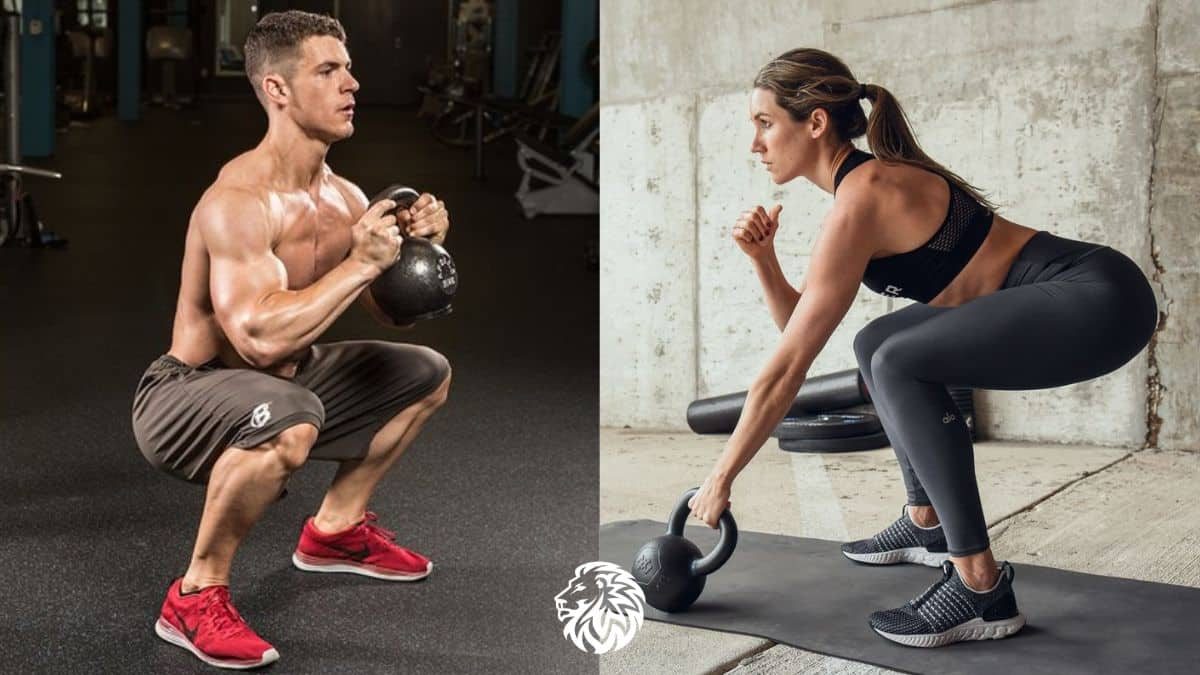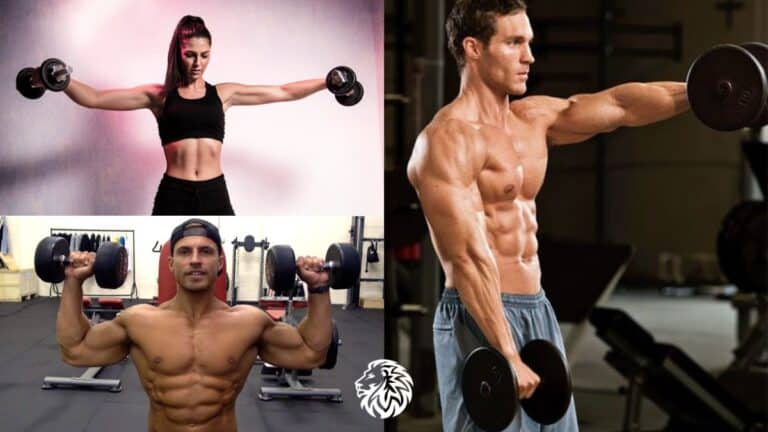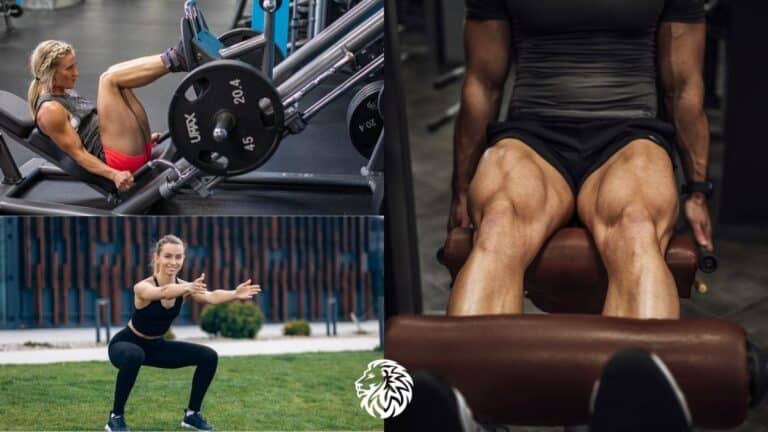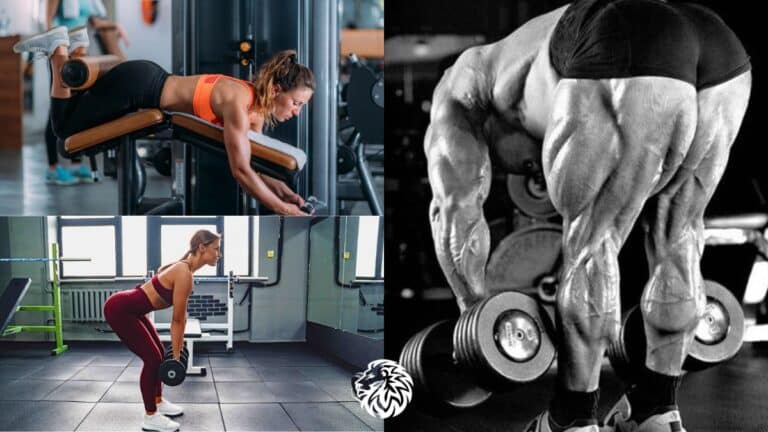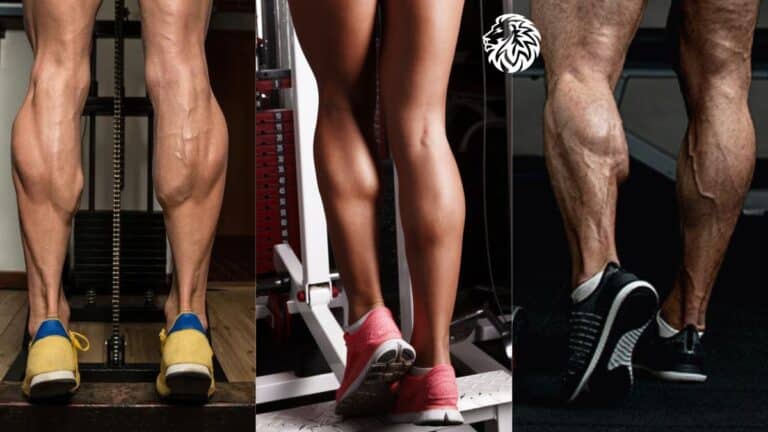Let’s dive into the world of our unsung heroes: the hamstring muscles. Nestled at the back of your thigh, these guys are the real MVPs in everything from your morning jog to that impromptu sprint when your toddler decides to play ‘catch me if you can’. Just trying to stand tall or keep your body in tip-top shape? Yep, you guessed it. You’re counting on those hamstrings. Their strength is your ticket not just to power and speed but also to avoiding those pesky injuries, especially around your knees and lower back.
Now, meet the kettlebell, the hamstring’s BFF. Picture a cannonball with a handle – sounds ancient, right? Well, this bad boy hails from Russia and has been turning heads for centuries. Today, it’s making waves in the fitness world, and not just for those intense full-body workouts. This unique piece of equipment is a game-changer for our hamstring heroes. The way you can swing, lift, and move with a kettlebell taps into the hamstrings in a way regular weights just can’t.
Stick with me, and by the end of our chat, you’ll be in-the-know on the top kettlebell moves to show your hamstrings some love. Ready to set the stage for a lifetime of strength and flexibility? Let’s dive in!
Benefits of Using Kettlebells for Hamstring Exercises
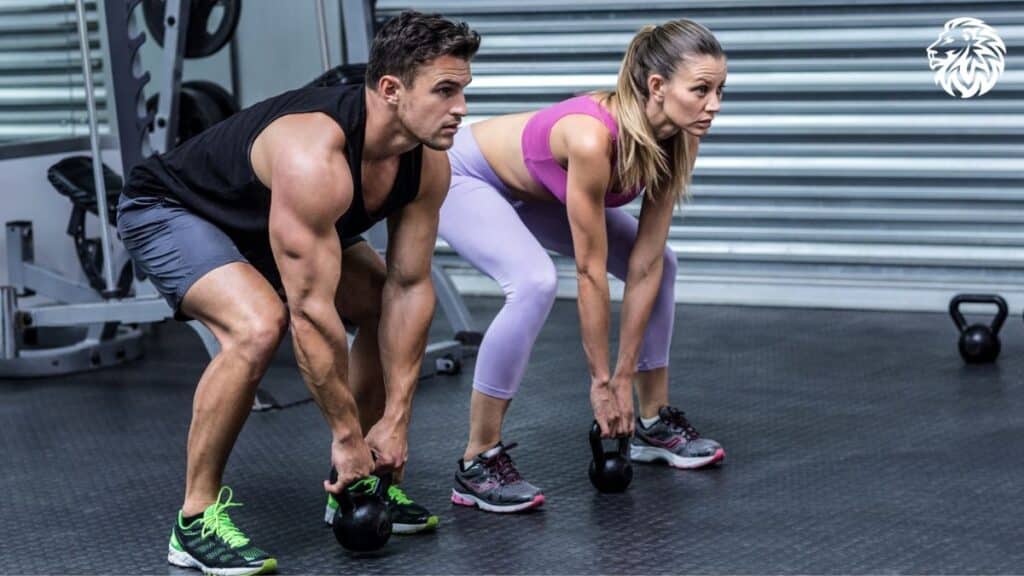
1. Functional Movement Enhancement
One of the standout advantages of kettlebell exercises is their ability to mimic real-life, functional movements. Whether you’re lifting, carrying, or transferring weight from one point to another, the movements closely align with daily activities. This has a profound benefit for the hamstrings as they play an integral role in many daily functions. Training with kettlebells ensures that you’re not just gaining strength but also enhancing your ability to perform everyday tasks with ease.
2. Increased Hamstring Muscle Activation Compared to Other Equipment
The unique shape and design of the kettlebell, combined with its off-centered weight, demands greater stabilization and control. This leads to increased activation of the hamstrings when performing exercises like swings, deadlifts, and lunges. In comparison to traditional weights or machines, kettlebells often require the user to engage the hamstrings more intensely and in more dynamic ways, leading to more significant strength and growth potential.
3. Versatility in Exercise Selection
The design of the kettlebell lends itself to a multitude of exercises, many of which can target the hamstrings from different angles and with varied intensity. Whether it’s a traditional kettlebell swing emphasizing the posterior chain or a more isolated stiff-legged deadlift, there’s no shortage of exercises to choose from. This versatility means you can constantly challenge your hamstrings and avoid plateaus in your training.
4. Suitable for Various Fitness Levels
Whether you’re a beginner just starting your fitness journey or a seasoned athlete, kettlebell exercises can be tailored to fit your needs. The range of kettlebell weights available, from light to heavy, ensures that individuals can find the right resistance level for them. Moreover, many kettlebell exercises have modifications or progressions, ensuring that as your strength grows, your workouts can evolve with you.
5. Combines Strength, Flexibility, and Endurance Training
Kettlebell workouts are renowned for their ability to offer a holistic fitness approach. While they certainly help in building hamstring muscle strength, they also promote flexibility through dynamic movements. Moreover, many kettlebell routines, like high-rep swings or circuit workouts, also incorporate a cardiovascular component, promoting endurance. This combination ensures that your hamstrings are not just strong but also agile and conditioned, reducing the risk of strains or injuries.
In summary, the kettlebell emerges as a formidable tool when it comes to hamstring training. Its combination of functional movement patterns, versatility, and adaptability across fitness levels makes it a must-have in any fitness enthusiast’s repertoire, especially those keen on developing powerful and resilient hamstrings.
Proper Kettlebell Handling and Safety
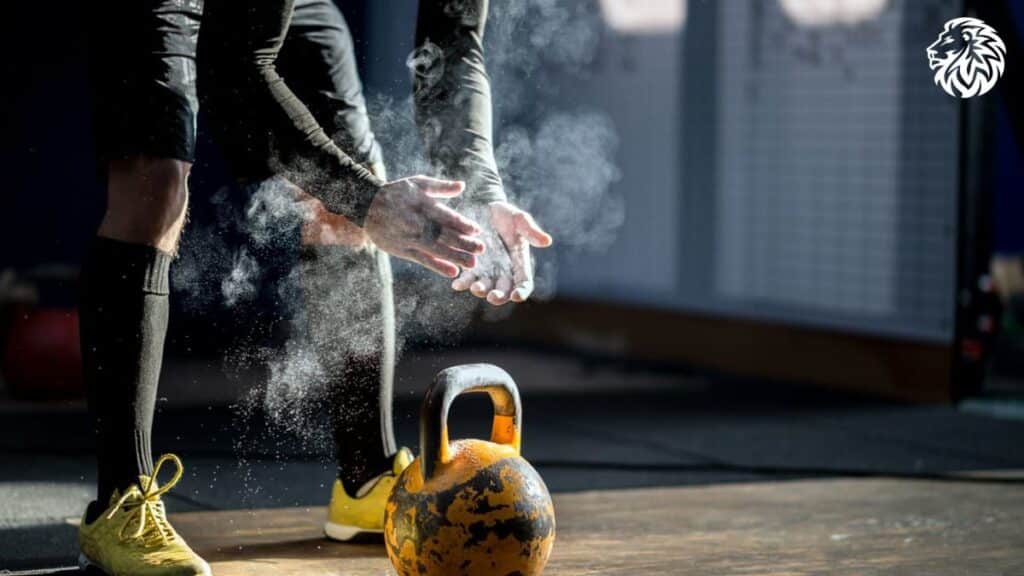
Kettlebell training is as effective as it is unique. However, like any form of exercise, it’s essential to approach it with proper knowledge and precautions to ensure safety and optimize results. Here, we delve into the fundamentals of kettlebell handling and safety measures.
Choosing the Right Kettlebell Weight
- Assess Your Strength Level: Before you dive into exercises, it’s essential to evaluate where you currently stand in terms of strength. If you’re a beginner, start with a lighter weight to master the form before progressing.
- Exercise Specificity: Different exercises might require different weights. For example, you might be able to handle a heavier kettlebell for a deadlift than for a single-arm swing.
- Listen to Your Body: The right weight should be challenging yet manageable. If you’re compromising form or feeling strain, it’s a sign you might need to adjust.
- Progress Gradually: As with all strength training, the goal is progressive overload. As you grow stronger, you can move on to heavier kettlebells, but always ensure a smooth transition to avoid injury.
Proper Grip Techniques
- Hook Grip: Most commonly used for swings and cleans. Instead of tightly gripping the handle, let the handle rest on the base of your fingers and lock the fingers with the thumb. This reduces the strain on the forearms.
- Goblet Grip: Used for goblet squats and certain lifts. Hold the kettlebell by the horns (sides of the handle) with both hands.
- Bottom-Up Grip: Used for more advanced moves like the bottom-up press. Grip the handle while the bottom (bell) faces up.
- Overhead Lockout: For exercises where the kettlebell is pressed or thrusted overhead, ensure your wrist is straight, not bent backward, with the weight resting against the forearm.
Importance of Warm-Up and Stretching Before Exercises
- Increase Blood Flow: Warming up gradually increases your heart rate, ensuring that the muscles are adequately oxygenated, prepping them for the workout ahead.
- Mobilize Joints: Kettlebell exercises often involve multiple joints. Movements like arm circles, hip circles, and ankle rolls can help in preparing these joints for the dynamic actions they’ll undergo.
- Activate Key Muscle Groups: Before diving into hamstring-centric exercises, consider activation exercises like glute bridges or leg curls to “wake up” the muscles.
- Dynamic Stretching: Opt for dynamic stretches, which involve movement, rather than static holds. Leg swings, hip flexor stretches, and torso twists can be particularly beneficial.
- Post-Workout Stretching: After your workout, this is the time for static stretches. Lengthening the hamstrings, quads, calves, and glutes can help in recovery and flexibility.
Incorporating kettlebell training can be transformative for fitness enthusiasts at all levels. However, the key to its effectiveness lies not just in the exercises you perform but in the care with which you approach each movement. Proper handling and prioritizing safety can ensure that you reap all the benefits kettlebells have to offer, without the risks.
The 8 Best Kettlebell Hamstring Exercises
1. Kettlebell Deadlift

- Description of the Exercise:
The kettlebell deadlift is a foundational movement that primarily targets the hamstrings, glutes, and lower back. It simulates the motion of bending down and picking up a weight from the ground, teaching proper hip-hinging mechanics. - Step-by-Step Execution:
- Begin by standing with feet hip-width apart, with a kettlebell positioned between your feet.
- Hinge at the hips, pushing them back, while maintaining a neutral spine. Slightly bend the knees.
- Reach down and grip the kettlebell handle with both hands.
- Engage the core and hamstrings, then lift the kettlebell by extending the hips and knees simultaneously.
- Stand tall at the top with shoulders back and chest up.
- Reverse the motion by pushing the hips back and bending the knees to lower the kettlebell to the ground.
- Key Benefits for the Hamstrings:
- Strength Building: The upward motion requires significant hamstring power, helping to build muscle strength.
- Functional Movement: The exercise mirrors real-life bending and lifting, promoting functional hamstring strength.
- Posterior Chain Activation: In addition to the hamstrings, the movement engages the entire posterior chain, creating balanced strength and development.
2. Kettlebell Single-Leg Deadlift
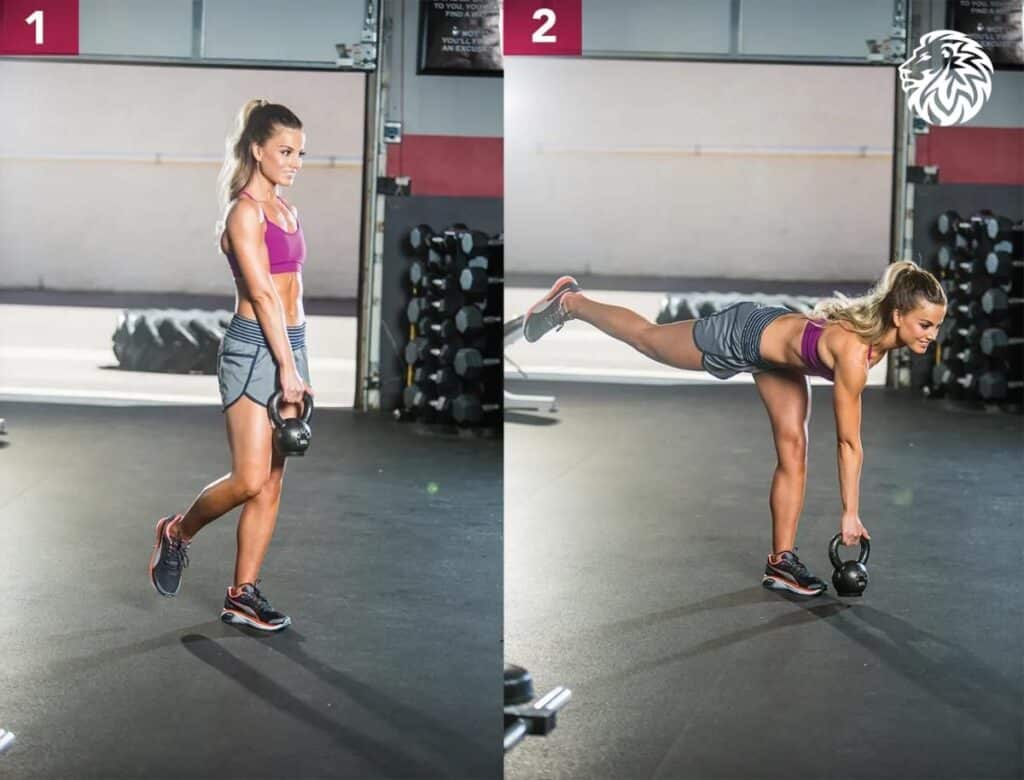
- Description:
The single-leg version of the deadlift challenges stability and balance while isolating one side of the body. It’s excellent for addressing muscular imbalances and emphasizing hamstring activation. - Execution Steps:
- Begin by standing upright, holding a kettlebell in your right hand.
- Ground your left foot firmly into the floor. This will be your standing leg.
- Keeping a slight bend in the left knee, hinge forward at the hips, extending the right leg straight behind you. The kettlebell will lower towards the ground. Your body should form a T-shape.
- Maintain a neutral spine throughout the movement. The kettlebell should descend directly below the shoulder.
- Using your left hamstring and glute, pull yourself back to the starting position, bringing the right foot down.
- Repeat for the desired number of reps, then switch to the other side.
- Hamstring Activation Points:
- Isolation: Working one leg at a time ensures focused activation of the hamstring.
- Balance and Stability: The unilateral nature of the exercise demands greater stability, which requires additional hamstring engagement to control the motion.
- Flexibility Enhancement: The movement also promotes hamstring flexibility as you reach forward with the kettlebell.
3. Kettlebell Swing

- Description:
The kettlebell swing is a ballistic movement that engages the entire posterior chain. It’s not just an exercise for the hamstrings but also involves the glutes, lower back, and even the shoulders to some extent. The swing emphasizes power generation from the hips, making it a functional and dynamic movement. - How-to Guide:
- Start with feet shoulder-width apart, with the kettlebell about a foot in front of you.
- Bend at the hips and knees to grip the kettlebell handle with both hands, maintaining a neutral spine.
- Hike the kettlebell back between your legs, keeping your arms straight.
- Explosively extend your hips and knees, propelling the kettlebell forward. Aim to get the kettlebell to chest height, but the power should come from the hips, not the arms.
- Allow the kettlebell to swing back down between your legs, readying for the next rep.
- Keep the movement fluid, ensuring the momentum remains consistent.
- Emphasis on the Posterior Chain Involvement:
- The kettlebell swing is a full-body movement, but its main driving force is the posterior chain, especially the hamstrings and glutes.
- The explosive hip hinge needed to propel the kettlebell forward heavily recruits the hamstrings.
- As the kettlebell swings back down, the hamstrings play a crucial role in controlling the descent, offering an eccentric contraction.
4. Kettlebell Sumo Deadlift High Pull

- Description:
This movement combines the wide-stance of a sumo deadlift with a high pull, adding an upper body component to the traditional deadlift. While the legs and hips generate power, the upper back and traps are engaged during the pull. - Execution Details:
- Begin with a wider than shoulder-width stance, toes pointed slightly outward.
- Position the kettlebell between your feet.
- Bend at the hips and knees, keeping the chest up and spine neutral, to grasp the kettlebell handle with both hands.
- Push through the heels, extending the hips and knees, to lift the kettlebell off the ground.
- As you approach the top of the movement, continue by pulling the kettlebell upwards, leading with the elbows, until it reaches chest or chin height.
- Lower the kettlebell back down in a controlled manner to the starting position.
- Hamstring Strengthening Aspects:
- The sumo stance places more emphasis on the inner thighs (adductors) but still heavily engages the hamstrings during the lift.
- The explosive nature of the movement, transitioning from a deadlift to a high pull, demands power from the hamstrings to drive the initial lift.
- Lowering the kettlebell back to the starting position requires hamstring control, offering both concentric and eccentric muscle engagement.
5. Kettlebell Good Morning
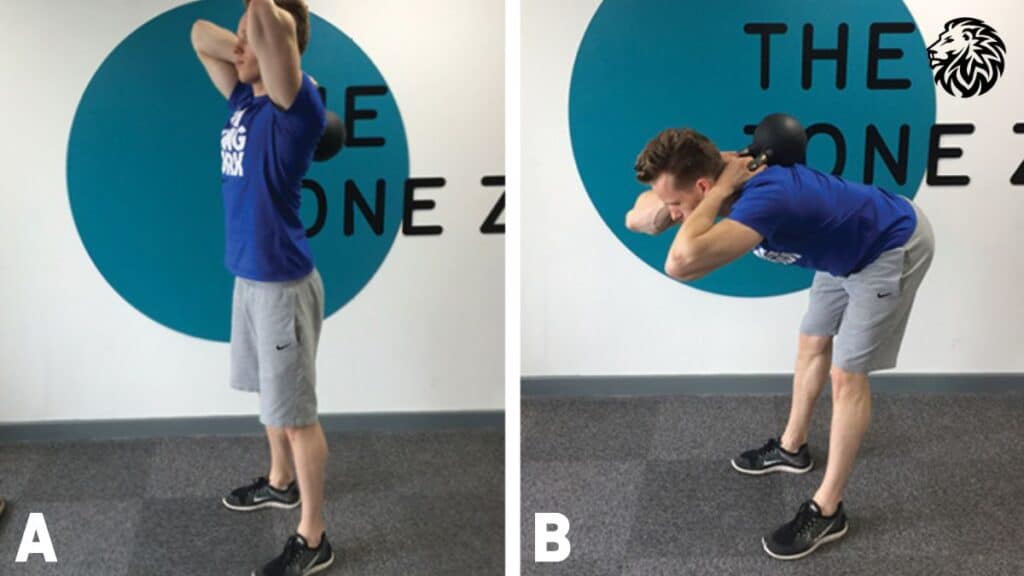
- Description:
The Kettlebell Good Morning is a hinge movement that predominantly targets the posterior chain, especially the hamstrings and lower back. With the weight held at chest level or behind the head, the exercise emphasizes stretching and contracting the hamstrings in tandem with the glutes. - Proper Form and Technique:
- Begin by standing upright, holding a kettlebell with both hands at chest level (goblet grip). Advanced users can also position the kettlebell behind the head, resting on the upper traps.
- Set your feet shoulder-width apart, keeping a slight bend in your knees.
- Maintaining a neutral spine and engaged core, hinge forward at the hips, pushing them back while keeping the kettlebell close to your body.
- Lower your torso until it’s nearly parallel to the ground, feeling a stretch in your hamstrings.
- Engage the hamstrings and glutes to return to the starting position, extending your hips forward.
- Hamstring Stretching and Strengthening Highlights:
- The forward hinge offers a deep stretch to the hamstrings, which can aid in flexibility.
- The eccentric (lengthening) phase of the exercise, as you hinge forward, places the hamstrings under tension, promoting strength.
- Returning to the upright position demands a strong contraction of the hamstrings in conjunction with the glutes.
6. Kettlebell Box Step-Ups

- Description:
Kettlebell Box Step-Ups are a functional exercise that requires stepping up onto an elevated surface (like a box or bench) while holding a kettlebell. This exercise effectively targets the hamstrings, glutes, quads, and core, promoting unilateral strength and balance. - Step-by-Step Guide:
- Start by standing in front of a sturdy box or bench, holding a kettlebell in a goblet grip (by the horns) at chest level.
- Plant your right foot firmly on the box, ensuring the entire foot is on the surface.
- Pressing through your right heel and engaging the hamstring and glute, lift your body onto the box. Bring the left foot to meet the right.
- Slowly step back down with the left foot, followed by the right, maintaining control throughout.
- Repeat for the desired number of reps, then switch to lead with the other leg.
- Hamstring and Glute Emphasis:
- The step-up motion necessitates a strong contraction in the hamstring and glute of the leading leg.
- Maintaining balance during the ascent and descent further engages the hamstring, as it works in tandem with the glutes and quads.
- The unilateral nature ensures each leg is individually worked, which is excellent for addressing any muscular imbalances.
7. Kettlebell Lunge with Pass Through
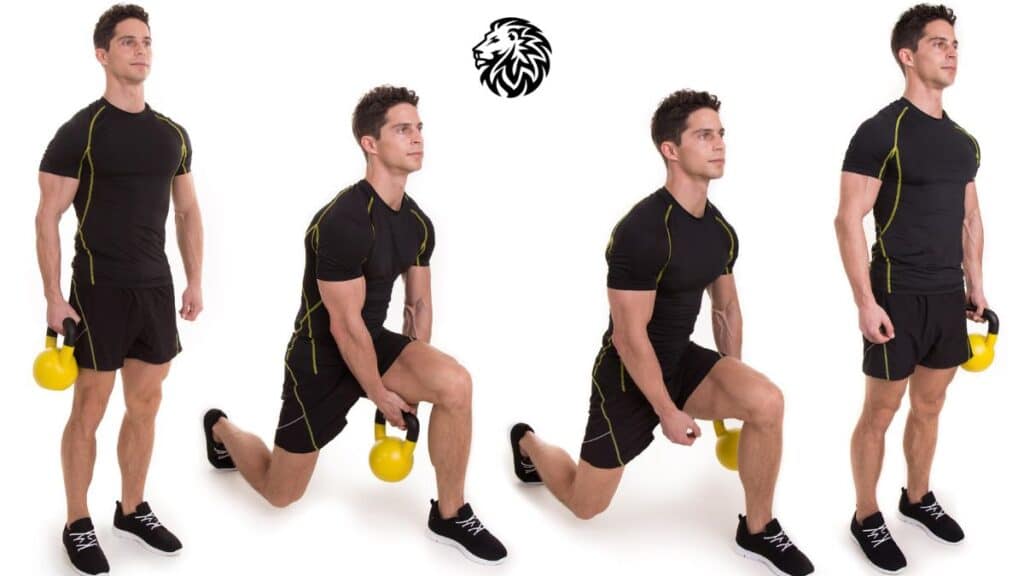
- Description:
The Kettlebell Lunge with Pass Through is a dynamic, multi-functional movement that combines the traditional lunge with an added challenge of passing the kettlebell between the legs. This not only works the lower body muscles but also enhances coordination and balance. - How-to Perform:
- Begin by holding a kettlebell in your right hand, standing upright with your feet hip-width apart.
- Take a step forward with your left foot, entering into a lunge. Both knees should be at a 90-degree angle.
- As you descend into the lunge, pass the kettlebell under your left thigh from your right hand to your left.
- As you push through your left heel to return to the starting position, bring the kettlebell back to the right hand.
- Repeat the motion, alternating legs and passing the kettlebell between hands with each lunge.
- Benefits for Hamstring Flexibility and Strength:
- The lunge motion provides a stretch to the hamstrings of the back leg, promoting flexibility.
- Pushing back to the starting position requires activation of the hamstrings, alongside the glutes and quads.
- The pass-through adds a stability challenge, making the hamstrings work harder to maintain balance and control.
8. Kettlebell Stiff-Legged Deadlift
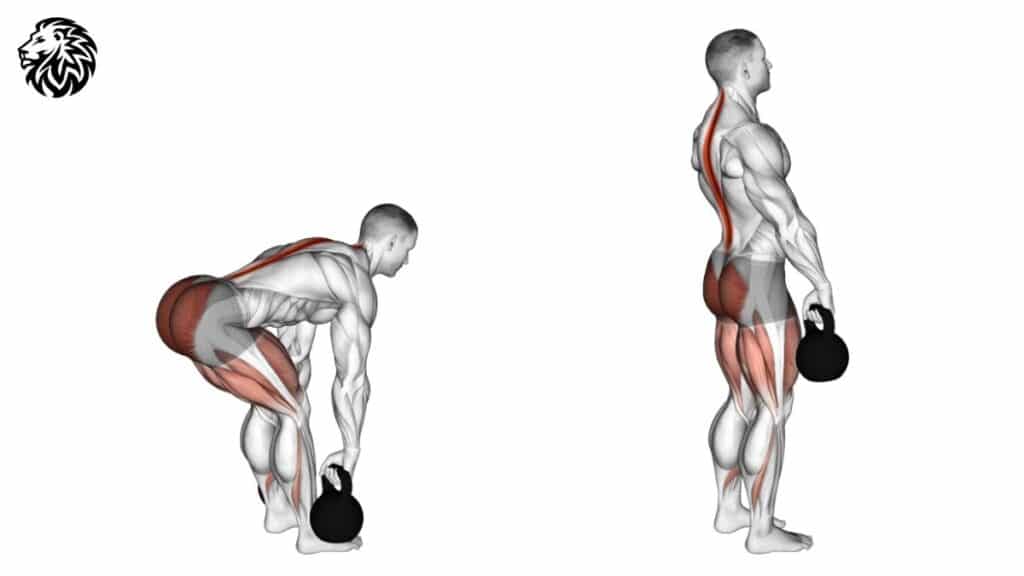
- Description:
The Kettlebell Stiff-Legged Deadlift, often compared to the traditional deadlift, specifically targets the hamstrings and lower back. By keeping the legs relatively straight, it emphasizes the stretching and contracting of the hamstring muscles. - Execution Details:
- Begin with feet hip-width apart, holding a kettlebell in front of you with both hands.
- With a slight bend in your knees, hinge at the hips, pushing them backward.
- Lower the kettlebell towards the ground while keeping a neutral spine. You should feel a stretch in your hamstrings.
- Engage the hamstrings and glutes to lift your torso back to the starting position, extending the hips forward.
- Keep the kettlebell close to your legs throughout the movement.
- Focusing on Isolating the Hamstrings:
- The stiff-legged variation ensures that the majority of the movement’s load is borne by the hamstrings.
- As you hinge and lower the kettlebell, the hamstrings are stretched eccentrically, which can aid in flexibility.
- The concentric phase (returning to upright) requires a powerful contraction of the hamstrings, promoting muscle strength and development.
Tips for Maximizing Hamstring Activation
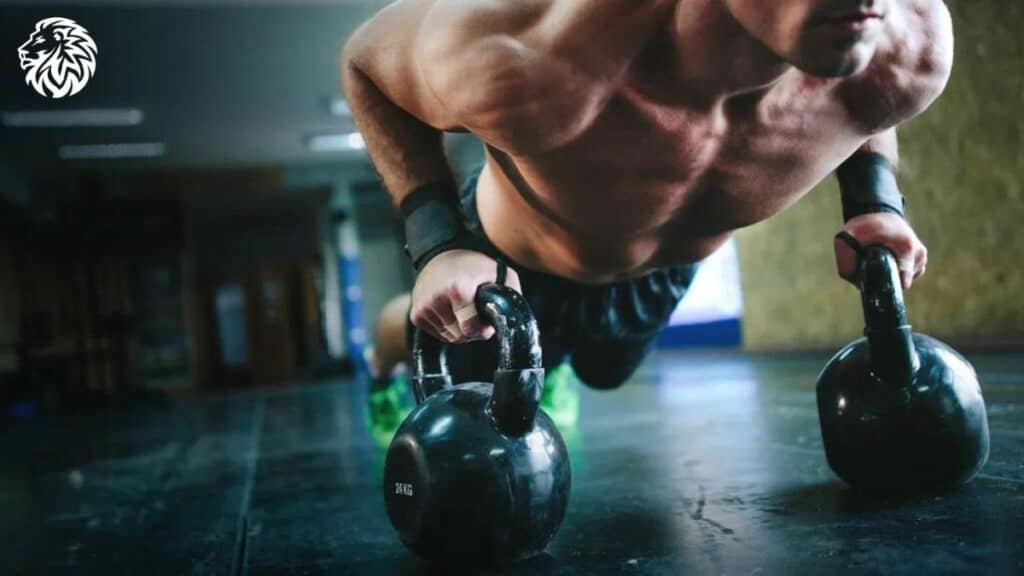
Enhancing hamstring activation during exercises not only ensures better results but also minimizes the risk of injuries. Here are some essential tips for effectively working the hamstrings during kettlebell exercises:
- Importance of Mind-Muscle Connection:
- Definition: The mind-muscle connection refers to the conscious focus on contracting a specific muscle or muscle group during exercise.
- Benefits for Hamstrings: Engaging mentally with your hamstrings helps in achieving more effective muscle contractions. This can lead to better workout results and increased muscle growth.
- How to Achieve: Begin by isolating the hamstrings in simple exercises, feeling the contraction and relaxation. Over time, this connection will become more natural in complex movements.
- Slow and Controlled Movements:
- Why it Matters: Fast, jerky movements can often shift the load away from the targeted muscle, leading to sub-optimal results and increased risk of injury.
- Benefits for Hamstrings: Performing exercises slowly ensures that the hamstrings are under tension for a longer duration. This time under tension is crucial for muscle hypertrophy (growth).
- Practical Application: For exercises like the Kettlebell Stiff-Legged Deadlift, lower the weight in a controlled manner for a count of 3-4 seconds. This increases the eccentric load on the hamstrings, which is beneficial for muscle strength and growth.
- Breathing Techniques to Support the Exercise:
- Breathing Basics: Proper breathing provides the muscles with the necessary oxygen and helps stabilize the core during heavy lifts.
- Benefits for Hamstrings: A stable core allows for better isolation of the hamstrings. With a strong and engaged core, it’s easier to focus on hamstring activation without other muscles compensating.
- Breathing Pattern: A general rule is to exhale during the exertion phase and inhale during the relaxation phase. For instance, during a Kettlebell Deadlift, inhale as you lower the kettlebell and exhale forcefully as you lift it.
Incorporating these tips into your kettlebell workouts can significantly improve hamstring activation and, consequently, the results you see from your training. Remember, it’s not just about the exercises you do, but also how you do them.
Common Mistakes and How to Avoid Them
While kettlebell exercises offer numerous benefits, especially for the hamstrings, they can also pose risks when not executed correctly. Here are some common mistakes people make and how you can avoid them:
- Over-arching the Lower Back:
- The Mistake: Allowing the lumbar region of the spine to hyperextend, especially during movements that involve a hip hinge, like kettlebell swings or deadlifts.
- Risks: This places undue stress on the lumbar vertebrae and can lead to lower back pain or injury.
- How to Avoid: Engage your core throughout the movement, imagining you are bracing your abdomen as if you were about to be punched in the stomach. This provides stability and helps maintain a natural spine curvature.
- Not Maintaining a Neutral Spine:
- The Mistake: Allowing the back to round (hunching) or over-arching during exercises.
- Risks: A rounded or excessively arched back can strain the spinal discs and supporting structures, leading to pain or injury.
- How to Avoid: Regularly practice good posture outside of your workouts. During exercises, visualize a straight line from your head to your tailbone. Utilizing a mirror or recording yourself can also help in self-assessment and correction.
- Using Momentum Instead of Muscle Power:
- The Mistake: Relying on swinging or bouncing movements to execute an exercise, rather than controlled muscle contractions.
- Risks: Using momentum can reduce the effectiveness of the workout and increase the risk of injury, especially if the weight is swung in an uncontrolled manner.
- How to Avoid: Focus on slow, controlled movements, especially during the eccentric (lowering) phase of an exercise. This ensures that the muscles, rather than momentum, are doing the work. For ballistic exercises like the kettlebell swing, ensure the power comes from the intended muscle group (e.g., the hips) rather than a jerky motion.
- Not Fully Extending or Bending the Hips:
- The Mistake: Not moving through the full range of motion in exercises that involve hip hinge or extension, such as deadlifts or swings.
- Risks: Incomplete movement patterns can lead to muscle imbalances and don’t allow you to harness the full benefits of the exercise.
- How to Avoid: Focus on the quality of each repetition rather than the quantity. Ensure that in exercises like the kettlebell swing, you’re fully extending your hips in the forward phase and sufficiently hinging at the hips during the backward phase. Seek feedback from a trainer or utilize video recording to check and correct your form.
While kettlebell exercises are a powerful tool for enhancing strength, flexibility, and endurance, it’s vital to approach them with proper technique and awareness. By being mindful of these common mistakes and taking proactive steps to avoid them, you can ensure a safer and more effective workout.
Conclusion
The hamstrings, as a crucial component of our posterior chain, play a vital role in many of our daily movements and athletic endeavors. Whether you’re walking, running, jumping, or lifting, these muscles offer strength, stability, and flexibility, underscoring their significance in overall fitness and injury prevention.
Kettlebell exercises, as highlighted in this article, provide a unique combination of benefits that aren’t easily replicated by other equipment. They enhance functional movement, increase muscle activation, and offer versatility in exercise selection. More specifically for the hamstrings, kettlebells can help bridge the gap between strength, flexibility, and endurance—key pillars of fitness.
For those seeking to bolster their hamstring strength and flexibility, or simply inject some diversity into their workouts, kettlebell exercises are a compelling option. They can be scaled for various fitness levels, making them accessible for beginners while still providing a challenge for the seasoned athlete.
Incorporating kettlebell exercises into your routine isn’t just about enhancing physical performance. It’s about fostering a holistic approach to fitness, where strength complements flexibility and power meets endurance.
So, as you continue on your fitness journey, remember the potent combination of kettlebells and hamstring-focused exercises. Integrate them into your regular workouts, and you’ll likely see not just improved hamstring strength and flexibility, but also overall enhanced physical prowess and well-being. Embrace the challenge, enjoy the process, and always prioritize form and safety. The road to stronger hamstrings and a more robust physique awaits!
References and Further Reading
- TrainHeroic. (n.d.). Best hamstring exercises. TrainHeroic. Retrieved from https://www.trainheroic.com/blog/best-hamstring-exercises/
- Built With Science. (n.d.). Best compound hamstring exercises. Built With Science. Retrieved from https://builtwithscience.com/fitness-tips/best-compound-hamstring-exercises/
- American Council on Exercise. (2018, February). ACE-sponsored research: What is the best exercise for the hamstrings? ACE Fitness. Retrieved from https://www.acefitness.org/continuing-education/certified/february-2018/6896/ace-sponsored-research-what-is-the-best-exercise-for-the-hamstrings/
- Real Simple. (n.d.). Hamstring exercises and stretches. Real Simple. Retrieved from https://www.realsimple.com/health/fitness-exercise/workouts/hamstring-exercises-stretches
- Northeast Texas Community College. (n.d.). Hamstring exercises. NTCC. Retrieved from https://www.ntcc.edu/athletics/live-athlete/exercises/hamstring-exercises
